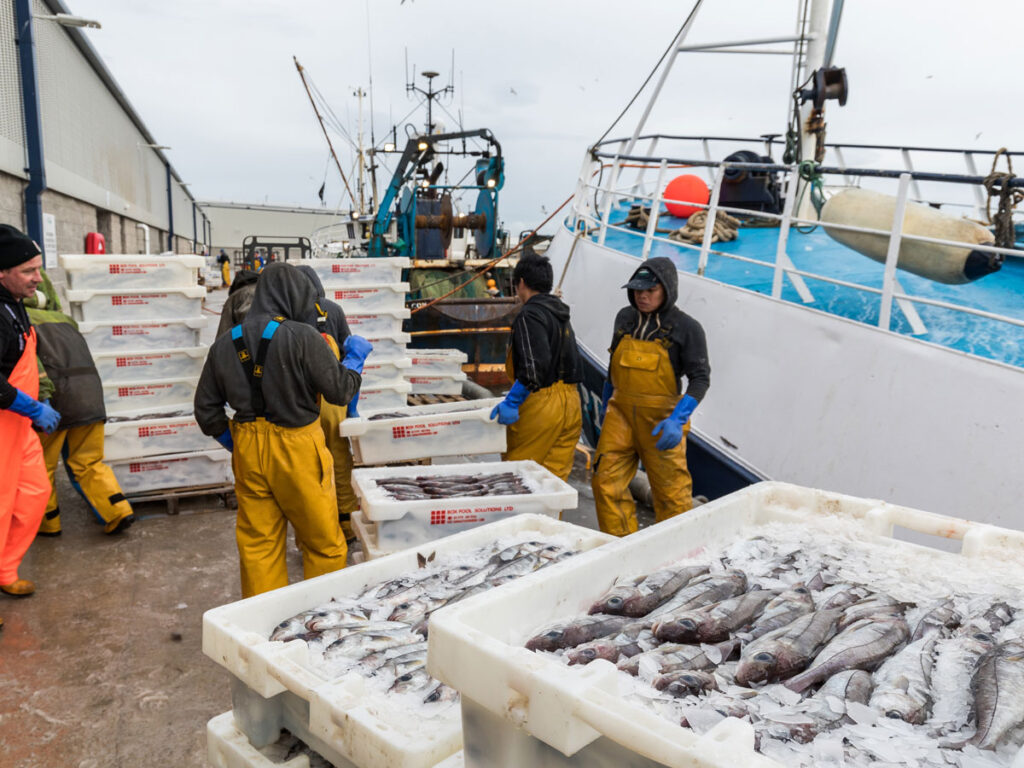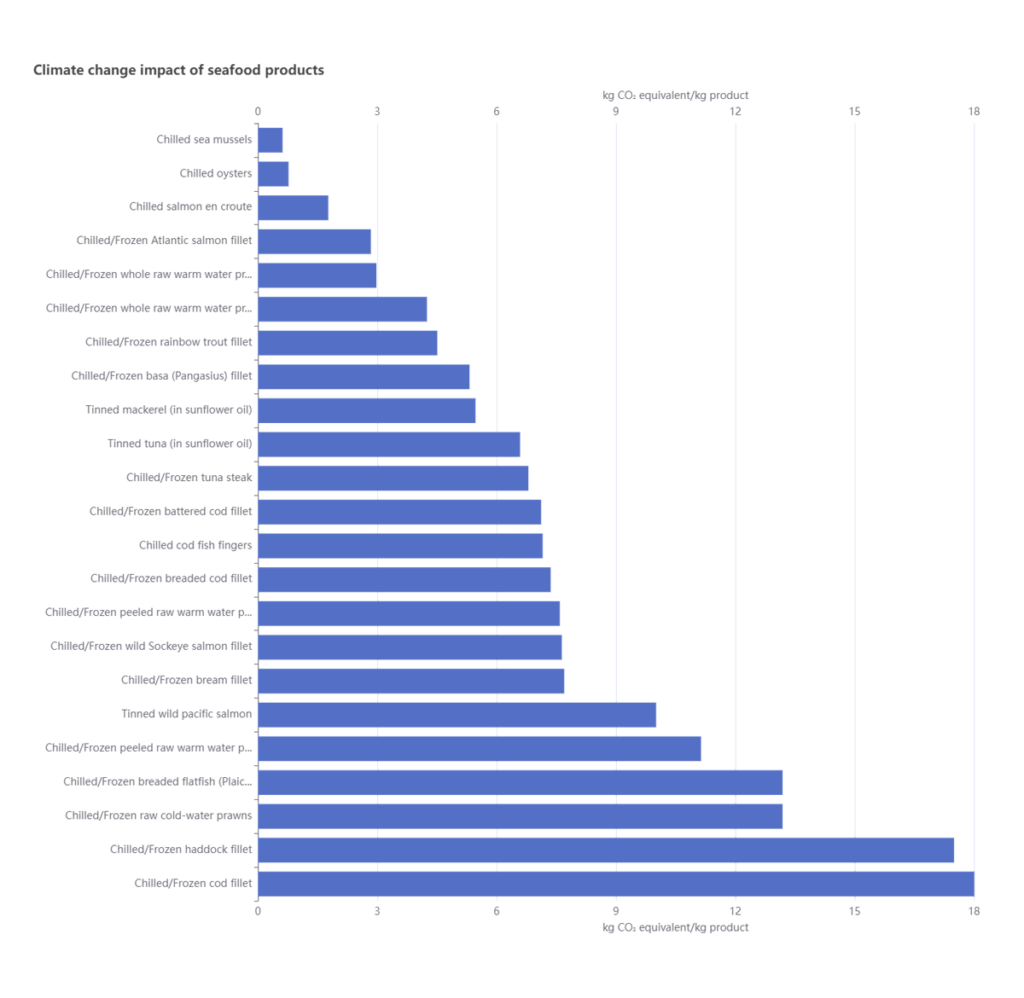
Last updated: 10 May, 2025 @ 12:11
If you’ve ever wondered about the carbon footprint of your favourite seafood products, then wonder no more – a new online tool is here to help.
The Seafood Carbon Emissions Profiling Tool by Seafish – the public body supporting seafood industry the UK – helps businesses in the seafood sector to measure and reduce the carbon footprint of their products and meet net-zero targets.
Although much of the tool is designed for the commercial seafood sector, there are some intriguing elements for us seafood lovers.
Carbon footprint comparison
Via the tool, consumers can discover the carbon footprint comparison of a range of seafood products, from chilled mussels and tinned tuna, to cod fish fingers and cold-water prawns.
For example, the Seafood Carbon Emissions Profiling Tool tells us that per finished product tinned tuna in sunflower oil has a footprint of 6.65/kg CO2 equivalent/kg whereas as chilled/frozen cod fillet is 18.01/kg CO2 equivalent.

Don’t get too excited
However, don’t get too excited just yet my carbon-curious consumer friends, as Seafish says that the carbon footprints provided are ‘indicative’ and ‘not currently based on UK seafood industry data’.
It says the intention is to ‘update these footprints when industry-averaged data becomes available as industry uses the tool’, and ‘as more accurate data becomes available, the comparisons may evolve’.
Therefore, ‘care should be exercised when making product comparisons’.
Every little helps
The good news is that some serious players in the industry are using the Seafood Carbon Emissions Profiling Tool, so fresh – and accurate – data is being obtained.
Ben Lambden, Tesco’s sustainable fisheries and aquaculture manager, said: “The tool is super important because it enables us to baseline carbon completely through the supply base – so at primary, at wild capture and aquaculture, enabling us to really understand where we’re at and how we can best reach our targets.
“The beauty of the tool is it’s continuously developing so, as you continue to use it, more data will be added and reviewed and it should get easier to use.”
Or, in other words, every little helps…
Give the Seafood Carbon Emissions Profiling Tool a go yourself, and learn more about the impact of your favourite seafood.